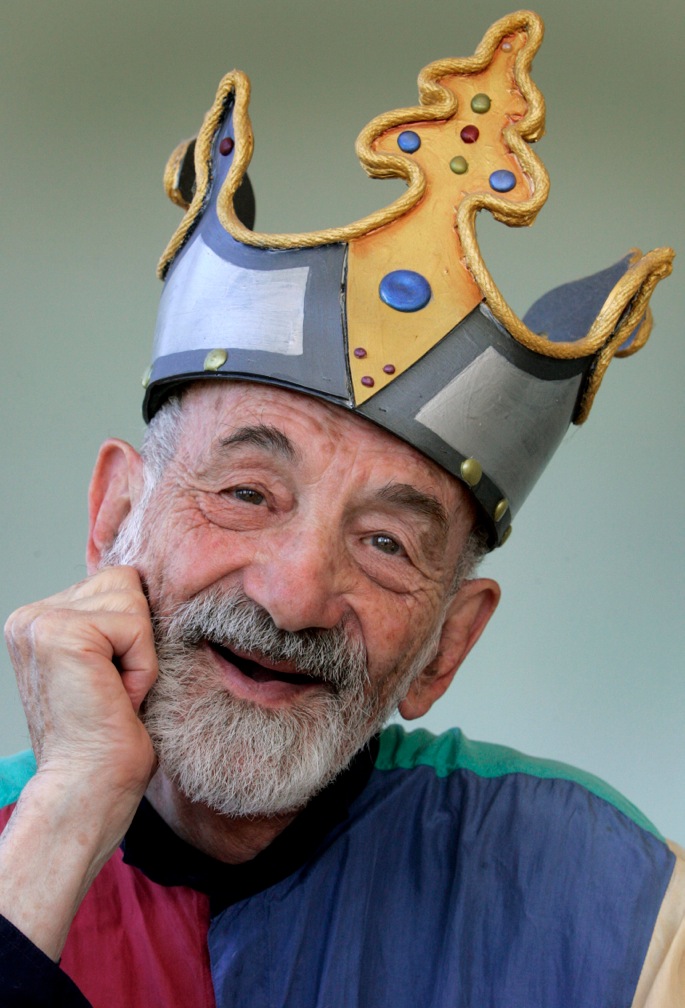Remy Charlip was born on January 10, 1929 in Brooklyn, NY. He died on August 14, 2012 in San Francisco. The following windy Sunday afternoon, he was lowered into the bone-dry ground on one of the ridges of Marin’s Mount Tamalpais. His woven wicker casket had been blanketed with earth, flowers, and farewells. A solitary hawk circled overhead as soft chanting wafted across the valley. He would have loved it.
Remy took with him over 60 years of making poetry in dance, writing, drawing, painting, and theater. When he moved to San Francisco in 1989, he had a major part of his life behind him with untold accolades and honors. He had helped shape the Merce Cunningham Dance Company, the Living Theater, the Paper Bag Players, and the National Theater of the Deaf. For decades he had choreographed, designed, performed, and directed for theater and dance, and he had become a much beloved author of some extraordinarily inventive books for children that respected their individuality and enlarged their imaginations.
He also had created over 100 of what he has become best known for in dance: Air Mail Dances, in which a performer follows a sequence of images but individually realizes the transitions between them. When choreographers die, often their works die with them. Remy’s Air Mail Dances won’t. Perfectionist in everything that he was, he set them up strongly and then he set them free. He gave them a life of their own.
In the Bay Area — though he would have smiled at this label — he quickly became an older statesman for a generation of dancers, much younger, very different from him and each other, such as Krissy Keefer, Anne Bluethenthal, Jules Beckman, and Keith Hennessy. For Oakland Ballet he choreographed a charmer, Ludwig and Lou, an homage to composer and former partner Lou Harrison. He watched over and delighted in the performance of some of his Air Mail Dances by, among others, Joanna Haigood, June Watanabe, and AXIS Dance Company.
As a performer he thrilled us in Meditation — a simple dance of walks, turns, and stretches — to what must be the gooiest of concert pieces from Massenet’s opera, Thais. But perhaps he reached the pinnacle of his performance career in 2001 when in A Moveable Feast, on a commission from the Lesbian and Gay Dance Festival, he was carried, swooped, and sailed across Z Space in the arms of a bevy of nude male dancers. It was his idea of heaven. And to boot, as music he had chosen the “Liebestod” from Wagner’s Tristan und Isolde.
Perhaps most remarkable about Remy was his gentle spirit and sense of wonder. He was deeply living in this world and yet he wasn’t. How was it, we kept wondering, that an artist and a man, of yes, extraordinary accomplishments, but also much pain, rejection and losses, could keep his spirit so buoyant, generous, and uncontaminated? When he received the Guardian’s Lifetime Achievement Goldie in 2001, he said (as he often did), “I feel that my work includes all the elements I practice.” At the core of his being Remy knew exactly who he was. It kept him in the world and out of it.
Rita Felciano is th Bay Guardian’s dance critic.

